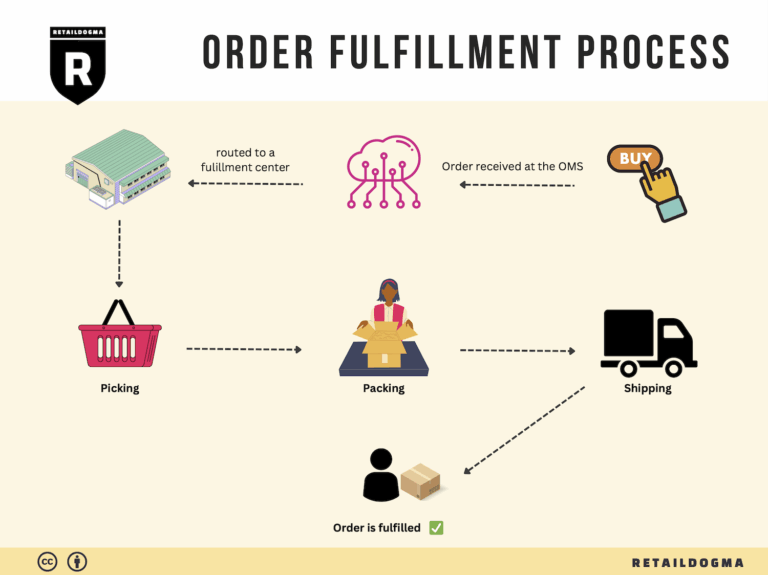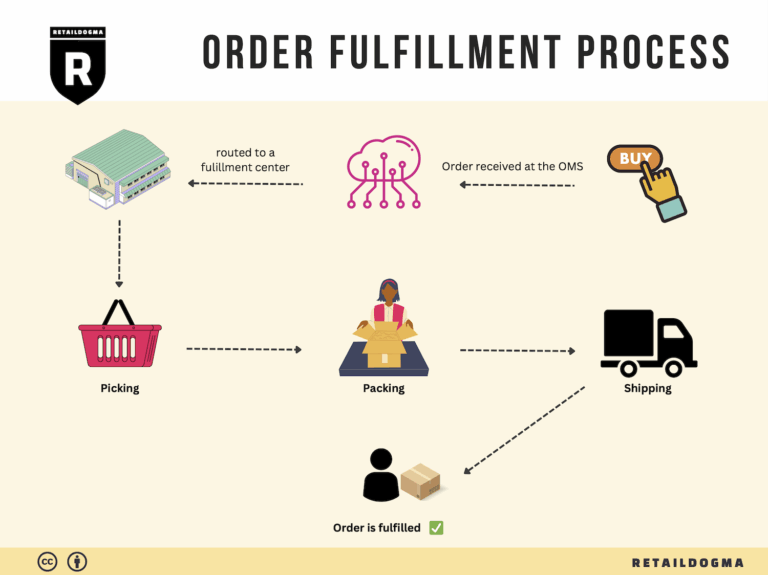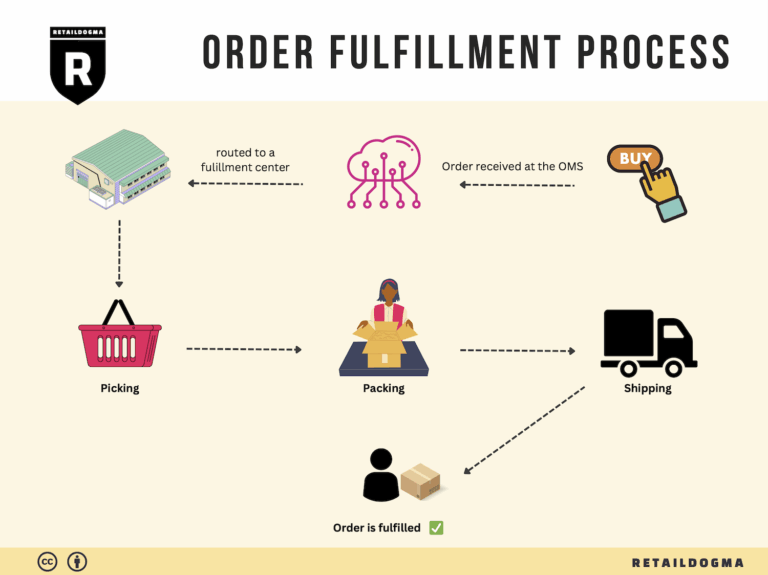What Is A Fulfillment Center? A Complete Guide (2025)
What is E-commerce Fulfillment? An Introduction for Growing Businesses
Understanding E-commerce Fulfillment: A Key to Scaling Your Business
As an e-commerce business owner, you know that the thrill of making sales can quickly turn into a daunting challenge when it comes to fulfilling those orders. The overwhelming tasks of packing, shipping, and managing inventory can distract you from what truly matters: growing your business. This is where e-commerce fulfillment comes into play. Simply put, fulfillment is the process of getting a product from your warehouse to your customer’s doorstep. It involves everything from storing inventory and processing orders to shipping and handling returns.
In this guide, we will explore various fulfillment models that can help you streamline your operations and focus on scaling your business. We will delve into third-party logistics (3PL) providers, which offer comprehensive services that can significantly reduce your overhead costs and improve your shipping efficiency. Additionally, we’ll discuss Fulfilled by Amazon (FBA), a popular choice for many sellers looking to leverage Amazon’s vast logistics network for faster order delivery.
We will also break down the core services that fulfillment centers offer, including inventory management, order processing, packaging, and shipping. Understanding these services is crucial for making informed decisions about which fulfillment strategy aligns best with your business goals.
Choosing the right fulfillment partner can be a game-changer for your e-commerce operation. We will provide practical tips on what to look for in a logistics partner, including their experience, technology capabilities, and scalability to match your growth trajectory. Pricing is another essential factor; we’ll help you navigate the cost structures associated with different fulfillment options, ensuring that you can budget effectively and maximize your return on investment.
Ultimately, this guide aims to empower you with the knowledge needed to make smart decisions about your logistics. As you navigate the complexities of e-commerce fulfillment, remember that the right strategies and partnerships can lead to enhanced customer satisfaction, reduced operational stress, and ultimately, increased sales. Let’s dive in and explore the world of e-commerce fulfillment together, paving the way for your business’s success.
What You’ll Learn In This Guide
- What is E-commerce Fulfillment? An Introduction for Growing Businesses
- The Order Fulfillment Process: From ‘Buy’ Button to Customer’s Door
- Comparing Fulfillment Models: In-House vs. 3PL vs. Dropshipping
- A Deep Dive into Amazon FBA: Pros, Cons, and Who It’s For
- Core Services Offered by Fulfillment Centers
- How to Choose a Fulfillment Partner: A 6-Point Checklist
- Understanding Fulfillment Pricing: A Breakdown of Common Fees
- Frequently Asked Questions (FAQs) about Fulfillment
- Conclusion: Is Outsourcing Fulfillment the Right Move for Your Business?
- Important Disclaimer
The Order Fulfillment Process: From ‘Buy’ Button to Customer’s Door
1. Receiving Inventory
The order fulfillment process begins with receiving inventory, which is a critical first step in ensuring that your products are accurately accounted for and ready for distribution. When products arrive at the fulfillment center, they are checked against purchase orders to verify that the correct items and quantities have been delivered. This process typically involves scanning barcodes or QR codes, which are associated with each product using a Stock Keeping Unit (SKU).
Importance: Accurate receiving of inventory is essential to avoid stock discrepancies, which can lead to fulfillment errors and customer dissatisfaction. By implementing a robust receiving process, businesses can maintain accurate inventory records, ensuring that stock levels are reliable and up-to-date.
Key Term: SKU (Stock Keeping Unit) – a unique identifier for each distinct product and service that can be purchased.
2. Warehouse Storage
Once inventory has been received and verified, the next step is warehouse storage. Products are organized in a systematic manner within the warehouse, often utilizing shelving systems and designated storage areas. Efficient storage solutions are crucial for optimizing space and facilitating easy access to products when orders are placed.
Importance: Proper warehouse storage helps streamline the order fulfillment process. By categorizing products logically and utilizing space effectively, businesses can reduce the time it takes to locate items during the picking process. This efficiency directly impacts order lead times and overall customer satisfaction.
Key Term: ABC Analysis – a method of categorizing inventory based on importance and value, helping to prioritize storage locations.
3. Order Picking
Order picking is the process of retrieving products from storage to fulfill customer orders. Once an order is placed, a pick list is generated, detailing the items needed for that order. Warehouse staff, or “pickers,” use this list to navigate the warehouse and collect the required items efficiently.
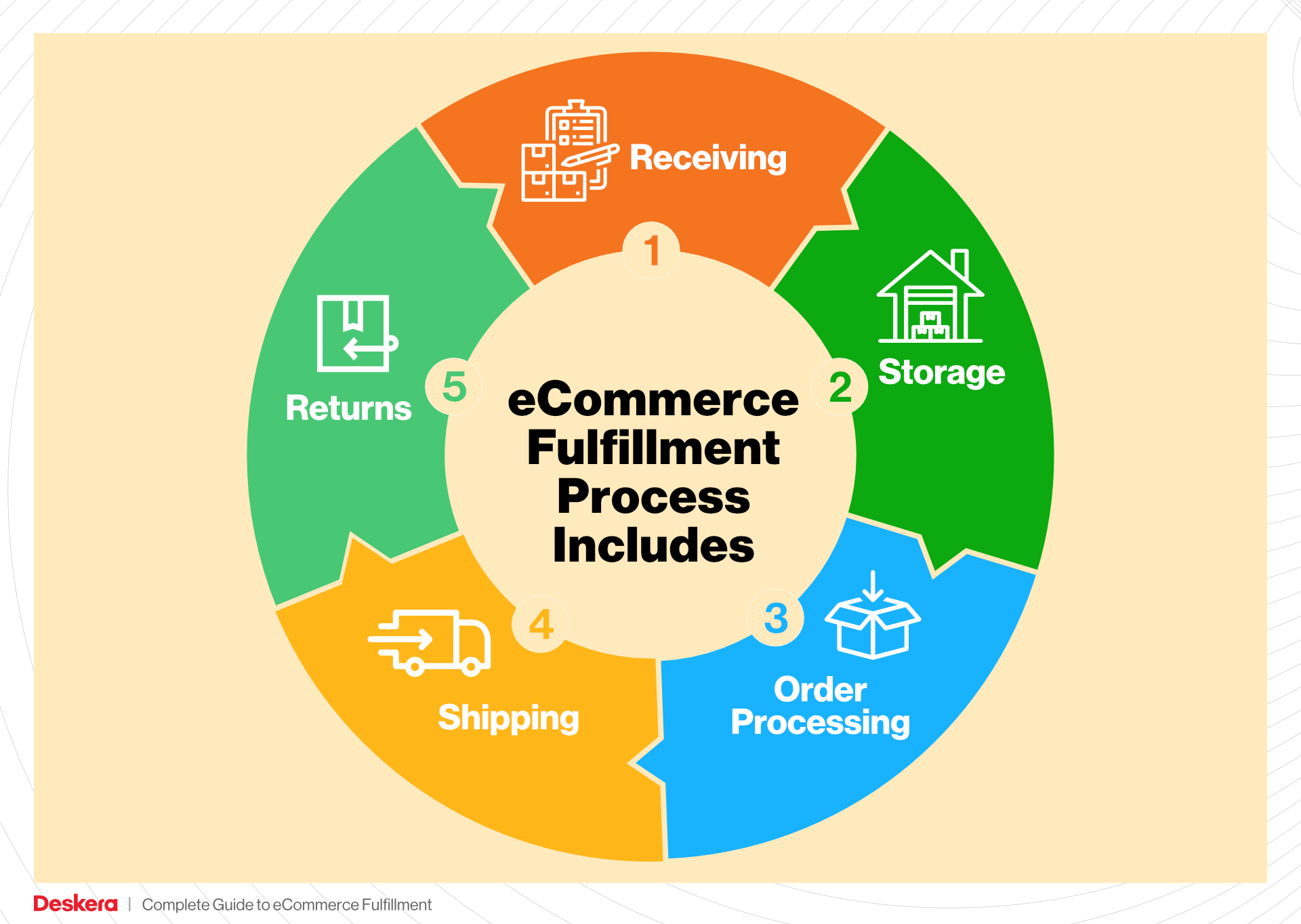
Importance: This step is vital because it directly affects the accuracy and speed of order fulfillment. Inefficient picking processes can lead to errors, such as sending incorrect items or quantities, which can result in returns and customer dissatisfaction. Implementing technologies like pick-to-light systems or automated picking robots can significantly enhance the picking process.
Key Term: Pick List – a document or digital display that outlines the items to be picked for an order, including their locations in the warehouse.
4. Order Packing
After the items have been picked, they move to the packing station, where they are prepared for shipment. During this phase, products are carefully packed into boxes, and protective materials may be added to prevent damage during transit. Packing also involves labeling and ensuring that the correct shipping information is attached to each package.
Importance: Effective packing is crucial for minimizing damage during shipping and ensuring that customers receive their orders in pristine condition. Well-packaged orders also enhance the unboxing experience for customers, which can positively impact brand perception. Additionally, including packing slips and return information can improve customer satisfaction and streamline return processes.
Key Term: Packing Slip – a document included in the package that lists the items contained within, serving as a receipt for the customer.
5. Shipping & Delivery
The final step in the order fulfillment process is shipping and delivery. Once an order is packed, it is handed over to a shipping carrier for delivery to the customer. Many fulfillment centers offer same-day shipping options, which can be a competitive advantage. Tracking information is usually generated and communicated to the customer, allowing them to monitor their order’s progress.
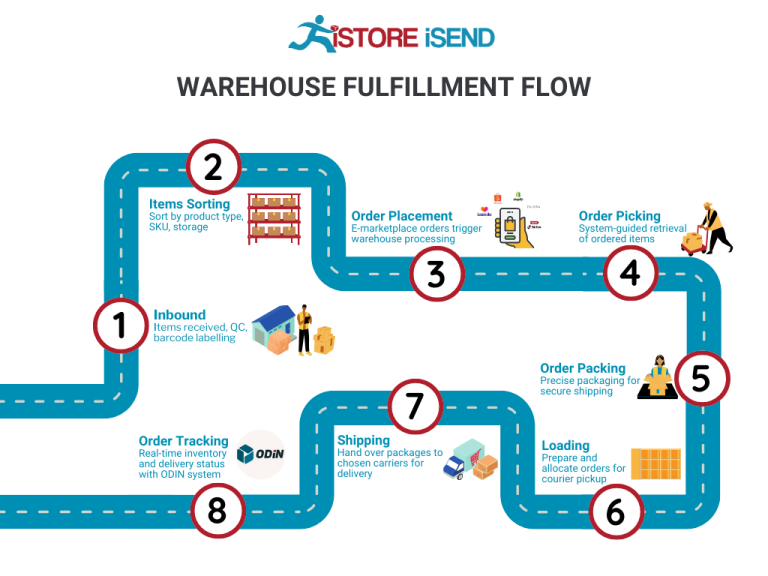
Importance: Timely and reliable shipping is critical for customer satisfaction and repeat business. The delivery experience can significantly impact a customer’s perception of your brand, making it essential to choose dependable shipping partners and methods. Additionally, offering multiple shipping options can cater to different customer preferences and budgets.
Key Term: Tracking Number – a unique code assigned to a shipment that allows customers to track the status and location of their package in real-time.
By understanding and optimizing each of these steps in the order fulfillment process, e-commerce businesses can enhance their operational efficiency, reduce costs, and ultimately provide a superior customer experience. This systematic approach not only helps in scaling operations but also strengthens brand loyalty and drives growth in sales.
Comparing Fulfillment Models: In-House vs. 3PL vs. Dropshipping
Comparison of Fulfillment Models
| Model | Who Handles Inventory | Best For (Business Stage) | Key Advantage | Key Disadvantage |
|---|---|---|---|---|
| In-House Fulfillment | The business itself | Established businesses with stable demand | Complete control over inventory and processes | High overhead costs and resource-intensive |
| Third-Party Logistics (3PL) | 3PL provider | Startups and scaling businesses | Cost savings and efficiency through outsourcing | Less control over the fulfillment process |
| Dropshipping | Supplier/manufacturer | New businesses or those testing products | Low upfront investment and no inventory management | Lower profit margins and reliance on suppliers |
In-House Fulfillment
In-house fulfillment refers to a model where the e-commerce business manages all aspects of the fulfillment process internally. This includes handling inventory storage, order processing, packaging, and shipping. Companies that adopt this model typically have established operations with a stable demand for their products. The primary advantage of in-house fulfillment is the complete control it provides over inventory and the fulfillment process. Businesses can customize their operations to meet specific needs, ensuring that they can quickly adapt to changes in demand or customer preferences. However, this model can also lead to high overhead costs, as businesses must invest in warehousing, staffing, and logistics technology. Additionally, managing fulfillment internally can drain resources and distract from core business activities, making it less suitable for those looking to scale rapidly.
Third-Party Logistics (3PL)
Third-party logistics, or 3PL, involves outsourcing fulfillment tasks to a specialized provider. The 3PL company handles inventory management, order processing, and shipping, allowing businesses to focus on their core competencies. This model is particularly beneficial for startups and scaling businesses that need to manage fluctuating order volumes without the overhead associated with in-house fulfillment. Key advantages of 3PL include cost savings, as businesses can leverage the scale and expertise of logistics providers, and increased efficiency, as 3PLs often have established systems and processes in place. However, one of the primary disadvantages is the reduced control over the fulfillment process. Businesses must rely on their 3PL provider for timely shipping and accurate inventory management, which can be challenging if the provider does not meet expectations. Nonetheless, with the right partner, 3PL can facilitate rapid growth and improve customer satisfaction through faster shipping and better logistics management.
Dropshipping
Dropshipping is a fulfillment model where retailers sell products without holding inventory. Instead, when a customer places an order, the retailer purchases the item from a third-party supplier, who then ships it directly to the customer. This model is particularly appealing for new businesses or those looking to test new products without significant upfront investment. The key advantage of dropshipping is the low financial risk, as businesses do not need to purchase inventory upfront or manage storage costs. However, dropshipping also comes with notable disadvantages, including lower profit margins and a reliance on suppliers for product availability and shipping accuracy. If a supplier fails to deliver on time or provides poor-quality products, it can negatively impact the retailer’s brand reputation. Additionally, businesses may face challenges in maintaining consistent branding and customer experience, as they have limited control over the fulfillment process. Overall, dropshipping can be an effective way to enter the e-commerce market, but it requires careful supplier selection and management to ensure success.
Conclusion
Choosing the right fulfillment model is crucial for the success of your e-commerce business. Each model—whether in-house fulfillment, 3PL, or dropshipping—has its unique advantages and disadvantages that must be weighed against your business goals, resources, and growth stage. By carefully evaluating these options, you can select the fulfillment strategy that best aligns with your operational capabilities and customer service expectations, ultimately setting the stage for scalable success.
A Deep Dive into Amazon FBA: Pros, Cons, and Who It’s For
Understanding Fulfillment by Amazon (FBA)
Fulfillment by Amazon (FBA) is a logistics service offered by Amazon that allows e-commerce sellers to store their products in Amazon’s fulfillment centers. Amazon takes care of storage, packaging, shipping, and customer service, enabling sellers to focus on growing their businesses. When a customer orders a product, Amazon handles the entire fulfillment process, ensuring prompt and efficient delivery.
How FBA Works
-
Setup: Sellers create an Amazon Seller Central account and list their products. They then prepare their products for shipment to Amazon’s fulfillment centers. This involves labeling and packaging according to Amazon’s requirements.
-
Storage: Once the products arrive at the fulfillment center, they are stored until sold. Amazon utilizes sophisticated inventory management systems to track stock levels and optimize storage space.
-
Order Processing: When a customer places an order, Amazon’s system automatically processes the order, picks the items from the warehouse, and packs them for shipping.
-
Shipping: Amazon ships the order directly to the customer, often providing same-day or two-day shipping options, particularly for Amazon Prime members.
-
Customer Service: Amazon also handles all customer service inquiries related to FBA orders, including returns and refunds, allowing sellers to maintain a professional presence without the burden of direct customer interaction.
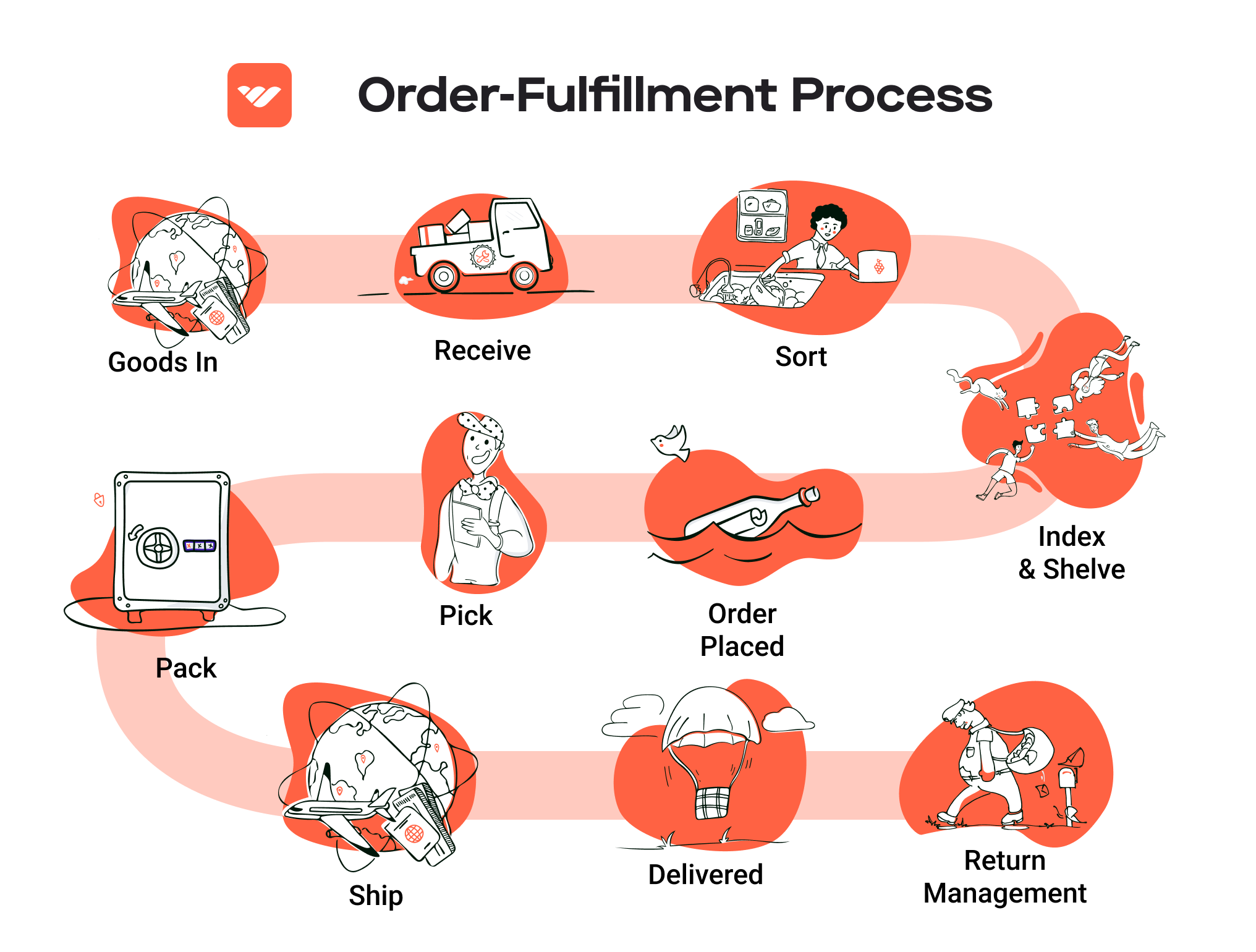
Pros of Using FBA
-
Prime Eligibility: Products fulfilled by Amazon are automatically eligible for Amazon Prime, which can significantly increase sales by tapping into the vast Prime customer base who prefer fast and free shipping.
-
Customer Trust: Amazon is a well-established brand that customers trust. Having products fulfilled by Amazon can enhance the perceived reliability of your brand, leading to increased conversion rates and customer loyalty.
-
Multi-Channel Fulfillment: FBA allows sellers to fulfill orders from other sales channels, such as their own websites or eBay. This means that sellers can leverage Amazon’s logistics network to streamline their operations across multiple platforms.
-
Scalability: With FBA, sellers can scale their businesses quickly without worrying about the logistics of warehousing and shipping. Amazon’s infrastructure supports rapid growth, making it easier to manage larger order volumes.
-
Time Savings: By outsourcing fulfillment to Amazon, sellers can focus on other crucial aspects of their business, such as marketing and product development, rather than spending time on logistics.
Cons of Using FBA
-
High Fees: While FBA offers numerous benefits, it comes at a cost. Sellers face various fees, including storage fees, fulfillment fees per item, and additional charges for long-term storage. These fees can eat into profit margins, especially for lower-priced items.
-
Strict Inventory Rules: Amazon has stringent inventory management policies that sellers must adhere to. Non-compliance can lead to penalties or even suspension of selling privileges. Additionally, sellers must regularly monitor their inventory levels to avoid excessive storage fees.
-
Commingling Risks: FBA uses a commingled inventory system, meaning that products from different sellers may be stored together. This can lead to issues if products are damaged or if a customer receives an item that is not from the intended seller. Sellers may have difficulty tracking and managing their inventory in such cases.
-
Loss of Control: By using FBA, sellers relinquish some control over the fulfillment process. This can be concerning for those who prioritize brand experience, as packaging and shipping are handled by Amazon.
-
Competition: Since FBA is available to all sellers on Amazon, it can create a highly competitive environment. Sellers need to differentiate their products and optimize their listings to stand out among numerous similar offerings.
Who is FBA Best For?
Fulfillment by Amazon is particularly well-suited for:
-
Small to Medium-Sized Businesses: Businesses that lack the resources to manage their logistics can benefit from FBA’s streamlined process and extensive infrastructure.
-
Brands Seeking Rapid Growth: For businesses looking to scale quickly, FBA offers a way to handle increased order volumes without the need for significant investment in warehousing and shipping.
-
E-commerce Entrepreneurs: New sellers or those testing new products can leverage FBA to minimize upfront costs and focus on marketing and sales.
-
Sellers with High Sales Velocity: Businesses that expect a high turnover of inventory can benefit from FBA, as the costs associated with storage and fulfillment can be offset by increased sales.
-
Multi-Channel Sellers: Those selling on multiple platforms can simplify their logistics by using FBA for all their fulfillment needs, allowing them to maintain consistent service levels across channels.
In conclusion, Fulfillment by Amazon can provide significant advantages for e-commerce businesses looking to streamline their logistics and enhance customer satisfaction. However, potential sellers should weigh the benefits against the costs and challenges associated with the service to determine if it aligns with their business goals.
Core Services Offered by Fulfillment Centers
Inventory Management & Warehousing
Inventory management and warehousing are foundational services provided by fulfillment centers. This process involves the systematic tracking and storage of products in a facility designed to maximize efficiency and accessibility. Fulfillment centers utilize advanced inventory management systems that allow businesses to monitor stock levels, manage reorders, and reduce the risk of overstocking or stockouts.
Benefits for E-Commerce Businesses:
-
Real-Time Visibility: Businesses gain access to live inventory data, enabling them to make informed decisions about stock levels and product availability. This transparency helps in planning marketing campaigns and managing customer expectations.
-
Optimized Storage Solutions: Fulfillment centers typically offer various storage options, including climate-controlled environments for sensitive items. This flexibility ensures that products are stored in conditions that maintain their quality and integrity.
-
Cost Efficiency: By outsourcing warehousing needs, e-commerce businesses can significantly reduce overhead costs associated with maintaining their own storage facilities. This allows them to allocate resources to other critical areas of their operations, such as marketing and product development.
Pick and Pack Services
Pick and pack services are essential for efficiently fulfilling customer orders. This service involves selecting the ordered items from the warehouse (picking) and preparing them for shipment (packing). Fulfillment centers employ streamlined processes and technology to ensure accuracy and speed in order fulfillment.
Benefits for E-Commerce Businesses:
-
Speedy Order Fulfillment: Fulfillment centers are designed to process orders quickly, often offering same-day shipping. This capability is crucial for maintaining customer satisfaction and competing in the fast-paced e-commerce environment.
-
Accuracy and Quality Control: With dedicated teams focused on picking and packing, fulfillment centers can ensure that the right products are shipped in perfect condition. This reduces the likelihood of returns and enhances customer trust in the brand.
-
Scalability: As e-commerce businesses grow, their order volumes can fluctuate significantly. Fulfillment centers offer scalable solutions that can easily accommodate increased order volumes without compromising service quality.
Kitting and Assembly
Kitting and assembly services are designed for e-commerce businesses that sell products that require assembly or combination before shipping. This service involves grouping individual items into a single package or preparing products for sale in a bundled format, such as subscription boxes or promotional kits.
Benefits for E-Commerce Businesses:
-
Streamlined Production: By outsourcing kitting and assembly, businesses can focus on their core competencies, such as product development and marketing. Fulfillment centers handle the logistical complexities, allowing brands to maintain agility and innovation.
-
Enhanced Customer Experience: Offering pre-assembled kits or products can enhance customer satisfaction by providing convenience and value. This approach can also encourage upselling and cross-selling opportunities.
-
Cost-Effective Solutions: Kitting can reduce shipping costs by consolidating multiple items into one package. This not only saves on shipping fees but also simplifies the fulfillment process, making it more efficient.
Returns Management (Reverse Logistics)
Returns management, or reverse logistics, is a critical service that ensures the smooth handling of returned products. Fulfillment centers implement robust processes to manage returns, including restocking, refurbishing, and processing refunds or exchanges.
Benefits for E-Commerce Businesses:
-
Simplified Returns Process: A well-organized returns management system allows businesses to offer hassle-free returns to their customers. This convenience can improve customer loyalty and reduce the barriers to purchase.
-
Data Insights: Fulfillment centers track return reasons and patterns, providing valuable insights into customer behavior and product performance. This data can inform inventory management decisions and product development strategies.
-
Cost Recovery: Efficient returns management can minimize losses associated with returned goods. Fulfillment centers can assess the condition of returned items and determine the best course of action, whether it be restocking, refurbishing, or recycling.
Conclusion
In the competitive landscape of e-commerce, leveraging the core services offered by fulfillment centers can significantly enhance operational efficiency and customer satisfaction. By focusing on inventory management, pick and pack services, kitting and assembly, and returns management, businesses can streamline their logistics processes, reduce costs, and ultimately scale their operations more effectively. Partnering with a fulfillment center not only alleviates the burdens of logistics but also empowers e-commerce businesses to focus on what they do best: creating exceptional products and experiences for their customers.
How to Choose a Fulfillment Partner: A 6-Point Checklist
Location & Warehouse Network
Importance:
The geographic location of your fulfillment partner’s warehouses can significantly impact shipping costs and delivery times. A partner with strategically placed facilities can help ensure faster delivery to your customer base, which is essential for maintaining customer satisfaction and competitive advantage.
Questions to Ask:
1. Where are your warehouses located, and how does this affect shipping times to my primary customer regions?
2. Do you have multiple facilities, and can I choose where my inventory is stored?
3. How do you handle logistics for shipping during peak seasons or high-demand periods?
Technology & Integrations
Importance:
In today’s e-commerce landscape, seamless technology integration is crucial. A fulfillment partner should have robust systems that can connect with your e-commerce platform, inventory management software, and customer relationship management (CRM) tools. This ensures real-time updates on inventory levels, order statuses, and tracking information.
Questions to Ask:
1. What technology platforms do you use, and how do they integrate with popular e-commerce platforms like Shopify, Amazon, or eBay?
2. Can you provide real-time inventory tracking and reporting?
3. How often do you update your technology, and what measures do you take to ensure system security?
Specializations (e.g., Cold Storage, Oversized Items)
Importance:
Different businesses have unique fulfillment needs. If your products require special handling—such as food items needing cold storage, or oversized items that require specific shipping methods—it’s crucial to partner with a fulfillment center that specializes in these areas.
Questions to Ask:
1. Do you have facilities equipped for specialized storage, such as climate control for perishable items?
2. What types of products do you specialize in, and how do you handle unique shipping requirements?
3. Can you provide case studies or examples of your experience with similar products?
Scalability & Capacity
Importance:
As your business grows, your fulfillment needs will change. A good partner should not only accommodate your current order volume but also have the capacity to scale operations efficiently as your business expands. This includes handling seasonal spikes in demand without compromising service quality.
Questions to Ask:
1. How do you manage scalability during peak seasons or when my order volume increases?
2. What is your maximum capacity for order fulfillment, and how quickly can you accommodate additional inventory?
3. How do you ensure consistent service quality during periods of growth or increased demand?
Pricing and Contracts
Importance:
Understanding the pricing structure and contract terms of a fulfillment partner is essential to ensure it aligns with your budget and financial goals. Look for transparency in pricing, including any hidden fees that could affect your bottom line.
Questions to Ask:
1. What is your pricing model (e.g., per order, per item, flat fee), and are there any additional fees I should be aware of?
2. What are the contract terms, and is there flexibility for scaling up or down based on my needs?
3. Can you provide a detailed breakdown of all costs associated with your services?
Customer Support & Reviews
Importance:
Reliable customer support can make a significant difference in your fulfillment experience. A partner that provides excellent support will help resolve issues quickly, ensuring minimal disruption to your operations. Additionally, checking customer reviews can provide insights into the partner’s reputation and service quality.
Questions to Ask:
1. What kind of customer support do you offer (e.g., dedicated account manager, 24/7 support)?
2. How do you handle fulfillment issues or errors, and what is your process for resolution?
3. Can you provide references or customer reviews that speak to your service quality and responsiveness?
Conclusion
Choosing the right fulfillment partner is a critical decision for e-commerce businesses looking to scale efficiently. By carefully evaluating potential partners against this checklist, you can ensure that you select a fulfillment provider that aligns with your operational needs, supports your growth, and enhances your customer experience. Take the time to ask these essential questions and weigh your options thoroughly to set your business up for success.
Understanding Fulfillment Pricing: A Breakdown of Common Fees
Initial Setup Fees
Initial setup fees are one-time charges that cover the costs associated with onboarding your business to a fulfillment center’s system. These fees can vary significantly based on the complexity of your operations and the specific services you require. For instance, if your business involves custom packaging or complex inventory management, the setup costs may be higher. Generally, this fee includes:
- Account setup: Creating your profile within the fulfillment center’s system.
- Integration: Connecting your e-commerce platform (e.g., Shopify, Amazon) with the fulfillment center’s software.
- Training: Depending on the provider, you may receive training on how to use their systems effectively.
It’s crucial to discuss the specifics of what the initial setup fee covers to avoid unexpected charges down the line.
Receiving Fees
Receiving fees are charged when the fulfillment center receives your inventory. These fees cover the labor and resources required to inspect, sort, and store your products. Typically calculated per pallet or per item, receiving fees may also include additional charges for handling special requirements, such as:
- Quality checks: Ensuring that the products meet your quality standards.
- Labeling: Applying SKU or barcode labels to products for easy tracking.
- Special handling: Charges for fragile, oversized, or temperature-sensitive items.
Understanding how receiving fees are structured will help you budget accurately and assess the total cost of bringing your products into the fulfillment center.
Storage Fees (per pallet/bin)
Storage fees are ongoing charges for keeping your inventory at the fulfillment center. These fees are usually calculated on a per pallet or per bin basis and can vary depending on the size of your inventory and the duration for which it is stored. Key factors influencing storage fees include:
- Volume: More pallets or bins will incur higher fees.
- Duration: Some fulfillment centers charge for the total time your products are stored, while others may offer tiered pricing for long-term storage.
- Seasonality: During peak seasons (e.g., holidays), storage rates may increase due to higher demand for space.
To manage storage costs effectively, consider optimizing your inventory levels to ensure you’re only storing what you need for immediate sales.
Pick & Pack Fees (per item/order)
Pick and pack fees are charged for the labor involved in retrieving items from storage and packing them for shipment. These fees can be structured in various ways, typically calculated per item or per order. Factors influencing pick and pack fees include:
- Order complexity: More items in an order or special packing requirements (e.g., gift wrapping) may increase the fee.
- Volume discounts: Some fulfillment centers offer lower rates for higher volumes, incentivizing businesses that have consistent order flows.
Understanding pick and pack fees is crucial for accurately projecting your fulfillment costs, especially if you expect order volume fluctuations.
Shipping Fees
Shipping fees encompass the costs associated with delivering your products to customers. These charges can vary widely based on several factors, including:
- Shipping method: Options range from standard ground shipping to expedited delivery, with costs increasing for faster services.
- Destination: Shipping to remote areas may incur additional fees.
- Weight and dimensions: Heavier or larger packages typically cost more to ship.
Fulfillment centers may also offer discounted shipping rates through partnerships with carriers, so inquire about these savings when comparing providers.
Conclusion: Getting an Accurate Quote
To obtain an accurate quote for fulfillment services, it’s essential to provide potential partners with comprehensive details about your business. Here are some tips to ensure you receive a precise estimate:
- Detail your inventory: Share information about the types and quantities of products you plan to store and ship.
- Clarify your order volume: Provide estimates of your expected monthly order volume, including peak periods.
- Discuss special requirements: If your products require unique handling or packaging, make this clear to avoid unexpected fees.
- Ask about discounts: Inquire about volume discounts, seasonal promotions, and any bundled services that may save you money.
- Review the contract: Carefully read the terms of service to understand all fees and conditions associated with the fulfillment services.
By being thorough in your communication and understanding the various fee structures, you can make an informed decision that aligns with your business goals and budget.
Frequently Asked Questions (FAQs) about Fulfillment
1. What is an Amazon Fulfillment Center?
An Amazon Fulfillment Center is a large warehouse facility where Amazon stores, picks, packs, and ships products directly to customers. These centers are strategically located to optimize logistics and ensure quick delivery times across various regions.
2. How does the fulfillment process work at Amazon Fulfillment Centers in Dallas?
The fulfillment process at Amazon Fulfillment Centers in Dallas involves several steps:
1. Receiving Inventory: Products are delivered to the center and scanned into the system.
2. Storage: Items are stored in designated areas, often categorized by product type or size.
3. Order Processing: When a customer places an order, the system automatically locates the items.
4. Picking: Employees or automated systems retrieve the items from storage.
5. Packing: The picked items are packed for shipment, ensuring they are secure for transport.
6. Shipping: Packages are shipped to the customer, often on the same day, depending on the order time.
3. What is the difference between a warehouse and a fulfillment center?
A warehouse primarily serves as a storage space for products, focusing on inventory management. In contrast, a fulfillment center is designed to handle the entire order processing cycle, including picking, packing, and shipping to customers. Fulfillment centers often have integrated technology for real-time inventory tracking and order processing.
4. What is a 3PL (Third-Party Logistics)?
A 3PL provider offers outsourced logistics services, including warehousing, fulfillment, and transportation. Businesses partner with 3PLs to leverage their expertise and infrastructure, allowing them to focus on core operations while improving efficiency and reducing overhead costs in their supply chain.
5. How much do fulfillment services cost?
The cost of fulfillment services varies widely based on several factors, including order volume, storage needs, and specific services required. Typically, businesses can expect to pay for storage space, picking and packing fees, and shipping costs. It’s essential to get quotes from multiple providers to find a solution that fits your budget and operational needs.
6. What are the benefits of using an Amazon Fulfillment Center in Dallas?
Using an Amazon Fulfillment Center in Dallas offers several advantages:
– Fast Shipping: Proximity to major markets allows for quicker delivery times.
– Scalability: Easily scale your operations as your business grows.
– Advanced Technology: Benefit from Amazon’s sophisticated logistics and tracking systems.
– Cost Efficiency: Reduce overhead costs by outsourcing fulfillment, allowing you to focus on growing your business.
7. Can I use Amazon Fulfillment Centers for products not sold on Amazon?
Yes, you can utilize Amazon Fulfillment Centers for products sold through other platforms, such as your website or eBay. This service is known as Fulfilled by Merchant (FBM), where you manage your listings while Amazon handles storage, packing, and shipping.
8. What types of products can be stored in Amazon Fulfillment Centers?
Amazon Fulfillment Centers can store a wide range of products, including electronics, clothing, household items, and even temperature-sensitive goods, provided they meet Amazon’s requirements for storage and handling. However, certain restricted items may require special handling or may not be allowed at all.
9. How do I get started with an Amazon Fulfillment Center in Dallas?
To start using an Amazon Fulfillment Center in Dallas, you’ll need to set up an Amazon seller account, create product listings, and enroll in Fulfillment by Amazon (FBA). Once your account is active, you can ship your inventory to the fulfillment center, where Amazon will take care of the rest.
10. What support is available for businesses using Amazon Fulfillment Centers?
Businesses using Amazon Fulfillment Centers can access various support resources, including seller support services, online tutorials, and forums. Additionally, many 3PL providers offer dedicated account management to assist with logistics, inventory management, and order fulfillment, ensuring a smooth operational experience.
Conclusion: Is Outsourcing Fulfillment the Right Move for Your Business?
Assessing the Value of Outsourcing Fulfillment
Outsourcing fulfillment can be a transformative strategy for e-commerce businesses aiming to scale effectively. By leveraging third-party logistics (3PL) services, businesses can save valuable time and resources. Instead of managing the complexities of inventory storage, order processing, and shipping logistics, you can focus on core competencies like product development and marketing. This shift allows for a more efficient allocation of your team’s efforts, driving innovation and growth.
Scalability is another compelling advantage of outsourcing fulfillment. As your business experiences fluctuations in order volume, a reliable fulfillment partner can seamlessly adjust to meet demand. Whether you’re ramping up for seasonal sales or managing a sudden influx of orders, a 3PL provider can offer the flexibility needed to maintain service quality without overextending your resources.
Moreover, partnering with an experienced fulfillment service means tapping into their expertise. 3PL providers bring industry knowledge, advanced technology, and best practices to the table, which can enhance your operational efficiency. From optimized shipping routes to professional packaging solutions, these services can significantly improve customer satisfaction and retention.
However, the choice of a fulfillment partner is crucial. Not all providers offer the same level of service, reliability, or compatibility with your business model. Conducting a thorough audit of your current shipping and fulfillment processes is essential. Identify areas of inefficiency or high costs and evaluate whether outsourcing could address these challenges.
In conclusion, if you’re looking to scale your e-commerce operations while reducing overhead and improving service delivery, outsourcing fulfillment could be the right move. Take the time to assess your needs and explore potential partnerships that align with your growth objectives. Start by auditing your current processes today to determine if a fulfillment partner is the next strategic step for your business.
Important Disclaimer
⚠️ Important Disclaimer
The information in this guide is for educational purposes. Fulfillment services, pricing, and platform features change frequently. Always conduct your own due diligence and consult with providers directly before making business decisions.

